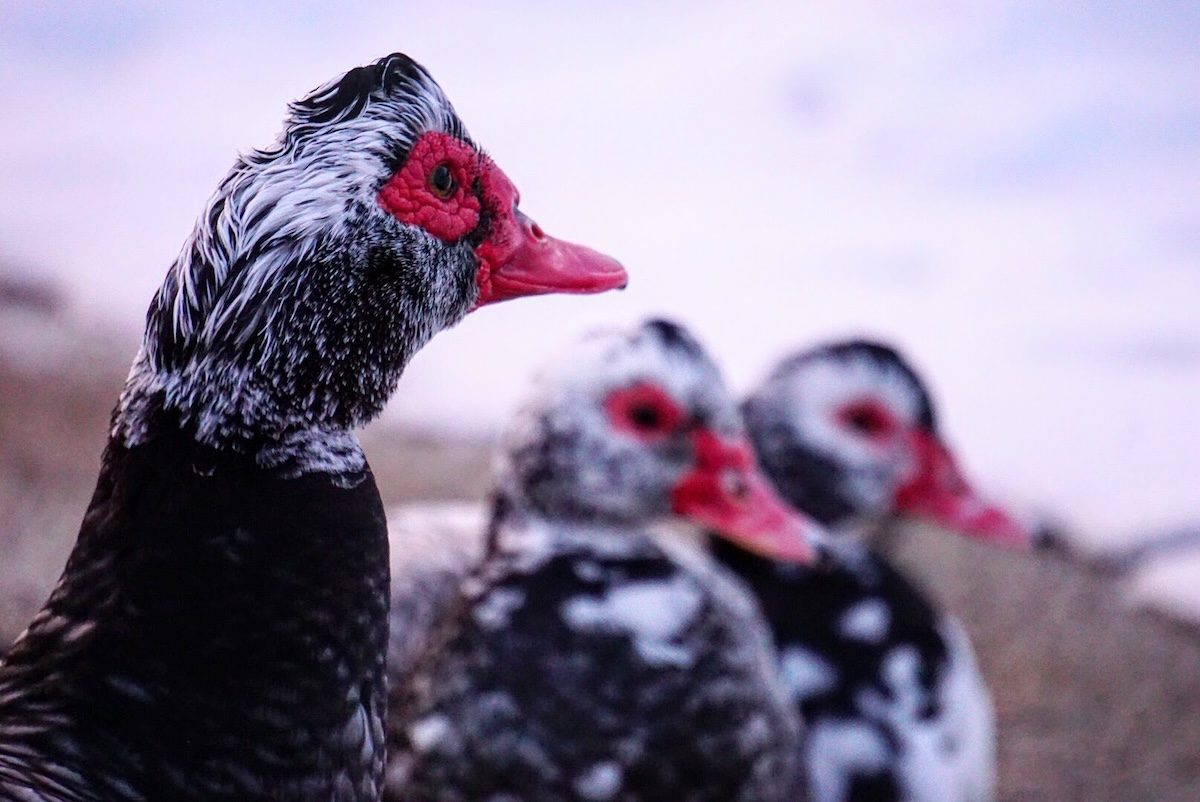Bigger than mallards and unusual in appearance, the Muscovy duck species is common in Florida and some cities in the U.S.

Meet the Muscovy Duck

On This Page
What Does a Muscovy Duck Look Like?

People seeing a muscovy duck for the first time often do a double take, due to their heads which are covered in fleshy red caruncles (more prominent in males). Muscovy ducks are native from Mexico through South America, but introduced populations thrive in parts of the U.S., particularly throughout Florida.
Muscovy ducks (Cairina moschata) are easy to identify with their warty red head markings. They are larger than many other common ducks like mallards, with male Muscovies reaching up to 15 pounds. Their coloration is generally made up of black and white feathers, though the patterns vary widely and no two Muscovy ducks are likely to look the same once they reach maturity.
Their heavy bodies make them somewhat clumsy during take-off and landing, and they generally don’t fly long distances. They are frequently raised in domestication for their meat, which usually appears on menus as “Barbary duck.”
Muscovy Duck Nesting Habits

Muscovy ducks mate several times a year, producing as many as 16 eggs each time. Mother ducks stay on the nest almost constantly throughout the month-long incubation. Ducklings hatch altogether over a period of about 24 hours, and then follow their mother for the next three months or so.
No ordinary duck: Meet the northern shoveler.
What Do Muscovy Ducks Eat?
Like their elders, the ducklings eat plants, small fish, insects, and just about anything else they can find. They love to eat bread thrown by humans, though this isn’t particularly good for them. (Love to feed ducks? Consider offering cracked corn instead; it more closely mimics their regular diet.)
Muscovy Ducks Range

Domesticated Muscovy ducks were brought to Florida intentionally in the mid-20th century, thought to add aesthetic appeal to lakes and ponds. Since then, they have established massive feral populations, to the point where they are considered a nuisance in some areas.
Though they are native to the tropics, they can withstand cold and even freezing temperatures, and multiple urban populations of these introduced ducks exist around the U.S.
Don’t miss these funny duck pictures that will make you quack up.
Muscovy Duck Name
The origin of the name “Muscovy” is uncertain. “Muscovy” means “from Moscow,” but these ducks are neither native to that region nor found there other than in domestication. Some link the name to certain Native American tribes, while Carl Linnaeus assigned it the species epithet moschata, meaning “musk” (due to their strong gamey odor), and this may be the most logical explanation.
Next, learn how to identify a black-bellied whistling duck.




















